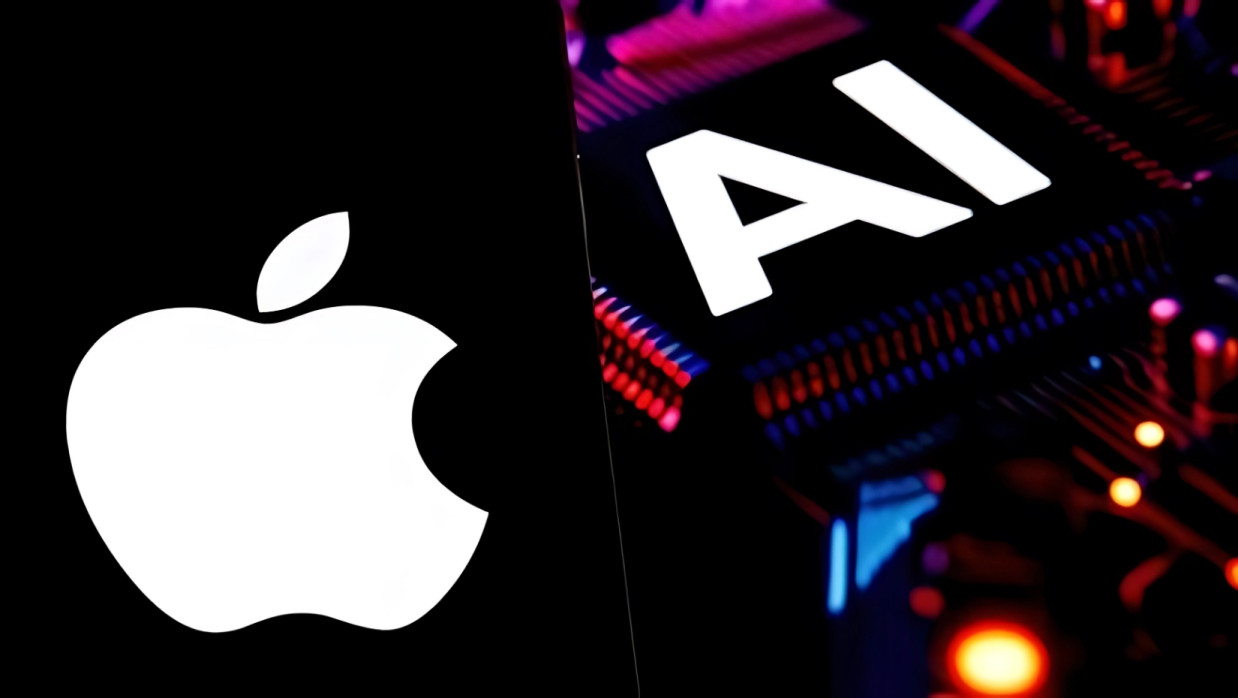
Apple’s AI Stumble
- ২৮ জুন ২০২৫, ০২:১৬

Apple, valued at $3 trillion and a global leader in consumer technology, has long set the standard for innovation with products like the iPhone, iPad, and MacBook. Yet, in 2025, as artificial intelligence (AI) reshapes the tech landscape, Apple appears to be struggling to keep pace. From delayed rollouts to unfulfilled promises, Apple’s challenges with its Apple Intelligence initiative highlight the risks even the biggest companies face in adapting to rapid technological shifts. This article explores Apple’s AI journey, its setbacks, and what they mean for global consumers and the tech industry.
The rise of consumer AI has been meteoric, with tools like ChatGPT amassing 100 million users in just two months, cementing AI as the next frontier of technology. Competitors have moved swiftly:
- Google offers Circle to Search, Gemini Assistant, and features like the Add Me camera tool.
- Samsung integrates Galaxy AI with capabilities like advanced object removal in photos.
- Microsoft embeds Copilot into Windows 11, enhancing tools like Microsoft Paint with AI editing.
These companies, despite occasional missteps like Microsoft’s controversial Recall feature, have tangible AI offerings that reassure investors and engage users. Meanwhile, Apple’s response—Apple Intelligence, announced at WWDC 2024—has been plagued by delays and underwhelming releases, raising questions about its ability to compete in this fast-moving field.
Apple Intelligence was pitched as a suite of AI-driven features for iPhones, iPads, and Macs, including Genmoji, Image Playground, Writing Tools, and a revamped Siri. However, the rollout has been disjointed:
- September 2024: The iPhone 16, marketed as “built for Apple Intelligence,” launched with iOS 18 but no AI features.
- October 2024: iOS 18.1 introduced Writing Tools and notification summaries, but the latter faced criticism for inaccuracies.
- November 2024: iOS 18.2 added Genmoji, Image Playground, and ChatGPT integration, yet these were seen as gimmicky compared to competitors’ offerings.
- December 2024: iOS 18.3 brought visual intelligence, allowing the camera to answer questions about the environment, but disabled faulty notification summaries for news apps.
Crucially, the promised Siri overhaul—featuring onscreen awareness, conversational abilities, and in-app controls—remains absent with no clear release timeline. Apple’s marketing, including billboards and commercials, has overhyped Apple Intelligence, with one ad pulled for showcasing a non-existent Siri feature. This disconnect has fueled perceptions of a company struggling to deliver.
Apple’s challenges stem from several factors:
- Second-Mover Strategy Misapplied: Apple’s success with hardware, like the iPhone and AirPods, relied on entering markets later with polished products. AI, however, is a software-driven field where rapid iteration is key, and Apple’s cautious approach has left it trailing.
- Business Model Misalignment: Apple’s revenue comes primarily from hardware and services, not data-driven AI. Its privacy-focused ethos limits data collection, a critical component for advanced AI, unlike competitors who leverage cloud-based models.
- Developer Resistance: Features like a Siri that performs actions within third-party apps (e.g., booking an Uber) may reduce developer control, discouraging support from app makers who prefer users to engage directly with their interfaces.
- Lack of Demos: Unlike Apple’s typical hands-on events, Apple Intelligence’s most ambitious features have never been demoed publicly, raising red flags about their readiness. This echoes past failures like Apple’s AirPower, which was hyped but never shipped.
Tech history is littered with giants who missed pivotal shifts. Nokia dominated mobile phones but failed to embrace smartphones, while BlackBerry clung to physical keyboards as touchscreens took over. Both faded into obscurity. Apple’s scale and resources make a similar collapse unlikely, but its AI delays risk eroding consumer trust and investor confidence, especially as competitors like Google and Samsung solidify their AI ecosystems.
For consumers worldwide, Apple’s AI struggles mean:
- Limited Innovation: Features like Genmoji are fun but lack the transformative impact of Google’s real-time search or Samsung’s photo-editing tools.
- Ecosystem Lock-In: Apple users, deeply invested in its ecosystem, may feel frustrated by the lack of cutting-edge AI, yet switching to Android or Windows involves significant hurdles.
- Privacy Trade-Offs: Apple’s privacy focus is a selling point, but it may limit AI capabilities compared to data-hungry competitors, leaving users to choose between functionality and security.
In markets like the United States, Europe, and Asia, where AI adoption is accelerating, Apple’s delays could cede ground to rivals. Emerging markets, with price-sensitive consumers, may turn to more affordable AI-powered devices from brands like Xiaomi or Oppo.
Apple’s history suggests it can rebound. The company has the resources—$3 trillion in market value and vast cash reserves—to invest heavily in AI. Potential paths forward include:
- Accelerating Siri’s Overhaul: Delivering the promised conversational Siri could restore confidence.
- Strategic Partnerships: Deeper integration with external AI models, like ChatGPT, could bridge gaps while Apple develops its own tech.
- Developer Incentives: Encouraging third-party app makers to support Apple Intelligence features could enhance its ecosystem.
However, time is critical. With AI evolving rapidly, further delays could entrench competitors’ leads. Posts on X reflect growing skepticism, with users and analysts questioning whether Apple can catch up before AI becomes as ubiquitous as smartphones.
Apple’s AI journey in 2025 is a stark reminder that no company, no matter how dominant, is immune to disruption. Apple Intelligence’s slow rollout, coupled with overhyped marketing and missing features, has exposed vulnerabilities in Apple’s strategy. For global consumers, this means waiting longer for AI innovations that competitors already offer. Yet, Apple’s track record of resilience suggests it’s too early to count them out. As the AI race intensifies, the world watches to see if Apple can reclaim its innovative edge—or risk becoming a cautionary tale like Nokia and BlackBerry. Stay tuned for updates, as Apple’s next moves could redefine its place in the tech landscape.